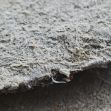Like thousands of others, Willie McNeal used Old Spice Talc for men as part of his daily routine. He used it for over 20 years, from 1958 to 1980, not knowing that the powder contained carcinogenic minerals. He was diagnosed with mesothelioma, an aggressive and rare cancer, in 2017, and subsequently sued three companies that were responsible for the product. He was awarded nearly $2 million in damages from the supplier, and an additional $3 million in punitive damages. A California Court of Appeal, finding no malice, nullified the punitive damage part of his award.
Defendants in the case were the Hitchcock Corporation, which owned the mine that sourced the asbestos-containing talc; Whittaker, Clark & Daniels (Whittaker), the company that distributed the minerals; and Shulton, the company that manufactured Old Spice talcum powder. This opinion only affects Whittaker, the sole remaining defendant, as the others were no longer part of McNeal’s lawsuit. Responsibility for McNeal’s cancer was assigned to each defendant on a percentage basis, with Whittaker’s share being 42%.
Writing for a 2-1 majority, Associate Justice Elisabeth A. Grimes of California’s Second District Court of Appeal wrote the July 5 opinion to which San Diego Superior Court Judge, sitting by assignment, concurred. Associate Justice John Shepard Wiley dissented. The Appeals Court majority reversed the punitive damage award of Los Angeles County Superior Court Judge Stephen M. Maloney.
Justice Grimes began her opinion with a helpful description of the chemistry that contributed to McNeal’s cancer. She explained that when talc, the main ingredient in talcum powder, is mined, it often contains asbestos, which contains carcinogenic ingredients.
Questions about the carcinogenic potential of talc began in 1971, but the link between it and mesothelioma was not discovered until 1994, 14 years after McNeal stopped using the powder. These dates played a key role in the appellate court’s decision.
The Superior Court awarded McNeal $1,067,719 in economic damages and $750,000 in noneconomic damages from Whittaker. These amounts were reduced by about $300,000 due to pre-verdict settlements. Importantly, the jury found that Whittaker acted with malice and awarded McNeal an additional $3 million in punitive damages.
Whittaker did not challenge the jury’s negligence or liability findings but took issue with the assumption that the evidence showed that its executives “were aware of the probable dangerous consequences of their conduct and willfully failed to avoid those consequences.” Grimes named relevant Whittaker executives and described their duties with regard to the case.
Several Whittaker employees testified about what these executives knew about talc’s dangers, what testing and analyses they conducted, what their policies were regarding contamination and disposal, as well as their communications with the Food and Drug Administration (FDA), doctors and other scientists. The evidence detailed what actions they took as a result.
Justice Grimes also pointed to a precedent in a case involving Johnson & Johnson’s talcum powder, which held that “post-injury scientific evidence does not create a reasonable inference of malice when a defendant fails to warn of probable dangerous consequents.” Plaintiff argued that this precedent did not apply because “the entire talc industry hid the fact that talc contains asbestos” from the public and the FDA. Grimes found no evidence of deliberate hiding.
A lengthy history of the scientific testing and developments that began in 1971 and lasted until the 1990s followed. Grimes described both public and private efforts by the FDA; the Cosmetic Toiletry and Fragrance Association, a trade group; individual manufacturers, and independent scientists and doctors to determine the safety hazards of talc. It covered the differing opinions, calls for further studies, dissatisfaction with the reliability of then-current testing methods and sampling techniques, and press reports that prevented a universally accepted opinion on talc safety.
Grimes then explained her conclusion that the evidence, viewed in the light most favorable to the plaintiff, did not establish any malice by the defendant. She wrote that malice “means conduct which is intended by the defendant to cause injury to the plaintiff or despicable conduct which his carried on by the defendant with a willful and conscious disregard of the right or safety of others.” She emphasized that “malice is a far cry from negligence,” and the methods that Whittaker used to test their talc “does not support a reasonable inference of malice.”
She found that the plaintiff failed to prove that Whittaker intended to harm the plaintiff, and she did not support a punitive damage award because there was a lack of “clear and convincing evidence” that Whittaker executives were aware of the “probably dangerous consequences” of their conduct when distributing talc. She also noted that the FDA did not take any action until the mid-90s and repeated that the link between talc and mesothelioma was conclusively discovered only in 1994.
In addition, the opinion found that all the asbestos cases that plaintiff relied on had “very different levels of knowledge and behavior than appear in the evidence in this case.” They all involved exposure to “products made with raw asbestos and asbestos dust from products made with asbestos.” None of those were present here, since “cosmetic talc products are not formulated to contain asbestos.”
The opinion concluded by reversing the part of the jury verdict about punitive damages. Grimes directed the trial court to vacate that part of the judgment and enter a new one.
Justice Wiley dissented, writing that appellate courts should “defer to reasonable jury decisions about factual questions” and should “allow punitive damages to give businesses the proper incentive to promote public safety.” He said the jury should have reviewed Whittaker’s omissions of material facts and he objected to its “reassuring message(s).” “The talc was not free from asbestos,” Wiley stressed. He said that the company knew about the dangers beginning in 1971.
“Punitive damages promote consumer safety. A proper punitive damages award is part of a traditional and rational system that serves our society as a whole,” he said. “Certainly, the McNeal family wishes the truth about Whittaker’s asbestos had come out sooner.”






